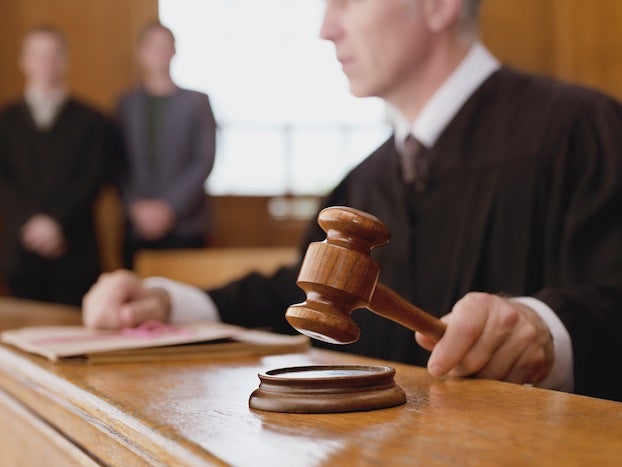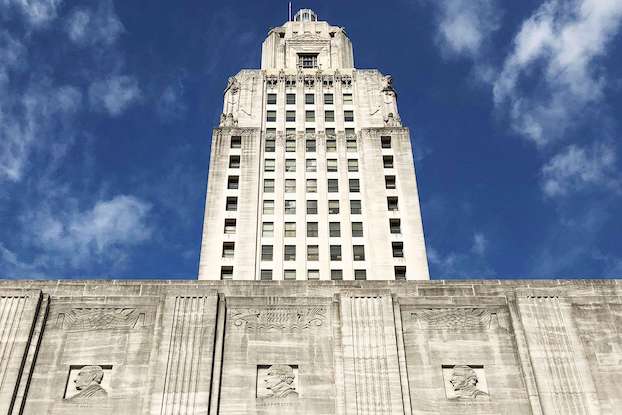Some bricks, rails still exist beneath LC streets
Published 7:34 am Wednesday, December 23, 2015
Many years ago Ryan Street and South Ryan Street were paved with bricks, and streetcar tracks ran down the middle. Are the bricks and tracks still there, under the current surfacing? If the bricks were removed, what happened to them?
Generally, the bricks and rails were removed on those streets that underwent reconstruction with concrete, and they were left intact on those that received asphalt overlays.
In the past, contractors kept the bricks, but the city has taken possession of them in recent years, “particularly when the pavement areas were smaller,” said Walt Jessen, an engineer who’s worked with the city on several projects.
“I know from past construction that there are rail segments under the asphalt pavement on Ryan Street,” Jessen wrote in an email. “Most recently we found them just south of the intersection of Clarence Street and at the Gill Street intersection. It would also not surprise me to find rails under portions of Kirby Street.”
The bricks and rails on Hodges Street, between Seventh and 11th streets, were exposed during overlay work about 12 years ago. Those bricks, along with some on Kirby and other streets, have over the years become visible as the asphalt has worn away.
Workers laid the brick streets in the early 1900s, and the first electric streetcar began operating in Lake Charles in 1906. The streetcars operated downtown for about 20 years before they were replaced by buses. Both Pithon and Ford streets featured bricks until the early 1980s.
From a June 18, 1981, American Press story about the removal of the bricks from Ford:
European immigrants skilled in the craft of stone cutting fitted the bricks together in a giant, hardened clay puzzle. It was done by hand. The workers got down on their hands and knees and laid brick after brick until they finished the road.
The bricks were laid on an eight-inch bed of soil concrete over which a two-inch sand layer had been spread. At first, sand was used to fill the gaps between the individual bricks, but after that proved prone to wear, mortar was substituted.
Most of the bricks laid in the part of the city known as Old Lake Charles, came from kilns here although thousands were brought from a Pittsburg, Kan., firm. Folklore has it that if the bricks are red, they were manufactured here.
Lake Charles electric streetcar lines, as described in “Street Railways of Louisiana,” published in 1979:
Goosport Line — From the downtown section of Ryan and Kirby Sts. this line extended out Kirby St. to Kirkman St., up Kirkman St. to Lawrence St., over Lawrence St. to Enterprise Blvd., up Enterprise Blvd. to Gieffers St., over Gieffers St. to N. 1st St. (now Nichols St.) and, up N. 1st St. to a point near Commercial St. This line served the industries located at Goosport, a suburb of Lake Charles.
Shell Beach Line — Beginning at Railroad Ave. and Kirkman St. the line extended over Railroad Ave. to Ryan St., down Ryan St. and South Ryan St. to Lake St. and up Lake St. to Shell Beach Rd. Here the line terminated at a showy Casino that was built over the lake. …
South Hodges Line — This line duplicated the route of the Shell Beach Line from Railroad Ave. and Kirkman St., through the downtown section, to Ryan St. and Miller Ave. (now 7th St.). The line turned on Miller Ave. and ran over to Hodges St., then ran down Hodges St. to 11th St. The line ended there until 1909, when it was extended over 10th St. from Hodges St. to Kirkman St., down Kirkman St. to Gulf St., and over Gulf St. to Common St.
l
Online: libguides.mcneese.edu/archives.
l
The Informer answers questions from readers each Sunday, Monday and Wednesday. It is researched and written by Andrew Perzo, an American Press staff writer. To ask a question, call 494-4098 and leave voice mail, or email informer@americanpress.com.





